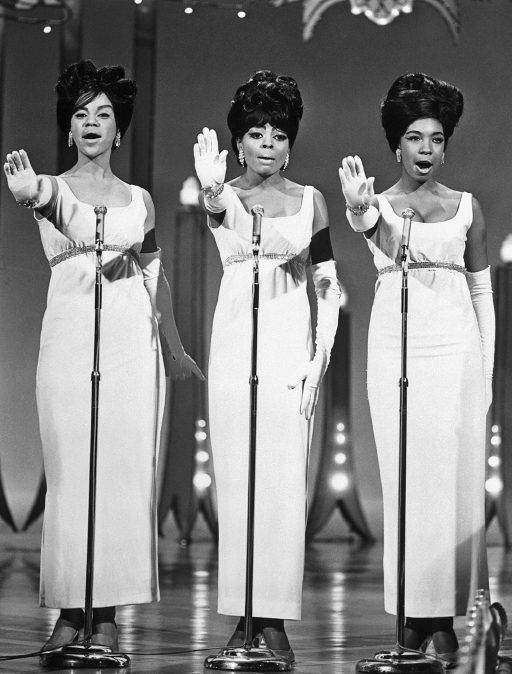Motown, Soul, and Funk

“Stop in the name of love!” The Supremes in concert, 1965: Florence Ballard, lead singer Diana Ross, and Mary Wilson. Bettmann/Corbis.
As the civil rights movement of the 1950s evolved into the Black Power movement of the late 1960s, a succession of black styles asserted their independence from white rock. These grew out of several sources: the remnants of black rhythm and blues in the late 1950s, most notably represented by singer-pianist Ray Charles; urban doo-wop groups that spawned such hit-makers as the Drifters (“Under the Boardwalk”); and “girl groups” such as the Shirelles (“Will You Love Me Tomorrow?”).
The first in this line was the Motown style, created by the part-time songwriter and record producer Berry Gordy Jr. of Detroit — “Motorcity” or “Motown.” Gordy was the most important black entrepreneur in early rock history. The groups he sponsored, among them the Supremes (“Where Did Our Love Go?”) and the Temptations (“My Girl”), evolved polished, lyrical styles and performances featuring dance steps and sequins.
A more visceral style that emerged around the same time was soul. Soul derived especially from southern gospel singing combined with the rhythm and blues of Ray Charles. Its leading lights were the powerful Aretha Franklin (“Respect”) and James Brown, self-styled as “the hardest working man in show business” — and certainly one of the hardest singing (“I Got You (I Feel Good)”).
By the end of the 1960s, soul was evolving into funk, a style in which the large bands with wind instruments typical of soul gave way to a sparer, hip sound (fuzz-tone bass guitar ostinatos, syncopated guitar scratching). One of the early groups pointing in this direction was the Bay Area–based Sly and the Family Stone (“Thank You (Falettinme Be Mice Elf Agin)”). A decade later funk, as performed by George Clinton and his band Funkadelic, was the style early DJs sampled to accompany the first rappers.
